Categories
- Bed Bug
- Bed Bug Cream
- BED BUG DATABASE
- Bed Bug Home Remedies
- Bed Bug Oil
- Bed Bug Remedies
- Bed Bug Spray
- Bed Bugs New York
- Bed Bugs Vancouver
- Bed Bugs World
- Bed Bugs American Samoa
- Bed Bugs Canada
- Bed Bugs Guam
- Bed Bugs North Mariana islands
- Bed Bugs Puerto Rico
- Bed Bugs United States
- Bed Bugs Alabama
- Bed Bugs Alaska
- Bed Bugs Arizona
- Bed Bugs Arkansas
- Bed Bugs California
- Bed Bugs Colorado
- Bed Bugs Connecticut
- Bed Bugs Delaware
- Bed Bugs Florida
- Bed Bugs Georgia
- Bed Bugs Hawaii
- Bed Bugs Idaho
- Bed Bugs Illinois
- Bed Bugs Indiana
- Bed Bugs Iowa
- Bed Bugs Kansas
- Bed Bugs Kentucky
- Bed Bugs Louisiana
- Bed Bugs Maine
- Bed Bugs Maryland
- Bed Bugs Massachusetts
- Bed Bugs Michigan
- Bed Bugs Minnesota
- Bed Bugs Mississippi
- Bed Bugs Missouri
- Bed Bugs Montana
- Bed Bugs Nebraska
- Bed Bugs Nevada
- Bed Bugs New Hampshire
- Bed Bugs New Jersey
- Bed Bugs New Mexico
- Bed Bugs New York
- Bed Bugs North Carolina
- Bed Bugs North Dakota
- Bed Bugs Ohio
- Bed Bugs Oklahoma
- Bed Bugs Oregon
- Bed Bugs Pennsylvania
- Bed Bugs Rhode Island
- Bed Bugs South Carolina
- Bed Bugs South Dakota
- Bed Bugs Tennessee
- Bed Bugs Texas
- Bed Bugs Utah
- Bed Bugs Vermont
- Bed Bugs Virgin Islands
- Bed Bugs Virginia
- Bed Bugs Washington
- Bed Bugs Washington DC
- Bed Bugs West Virginia
- Bed Bugs Wisconsin
- Bed Bugs Wyoming
- BedBug Removal
- BedBugs in Michigan
- Canada Bed Bugs
- Do it yourself Bed Bug
- Exterminator Bed Bugs
- Health
- Pest Inspection
- Toronto Bed Bugs
- Welcome to Bed Bugs
Registry Sites List
- Bronx Bed Bug Registry Infestation Maps, Residential And Hotel
- Brooklyn Bed Bug Registry Infestation Maps, Residential And Hotel
- Manhattan Bed Bug Registry Infestation Maps, Residential And Hotel
- Nyc Bed Bug Registry Infestation Maps, Residential And Hotel
- Queens Bed Bug Registry Infestation Maps, Residential And Hotel
- Staten Island Bed Bug Registry Infestation Maps, Residential And Hotel
Recommended Sites
Daily Archives: November 14, 2022
News Links:
Bed Bug Nesting Location
Bed Bug Nesting Location
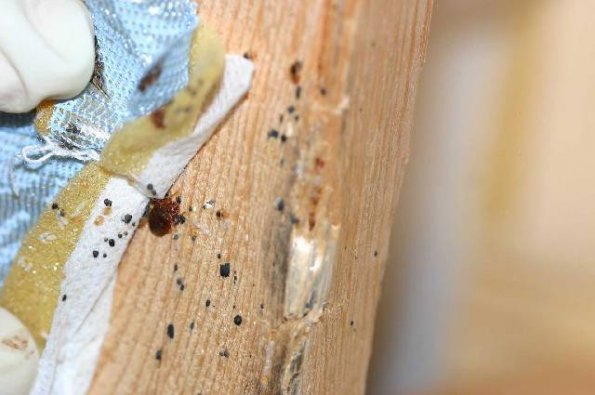
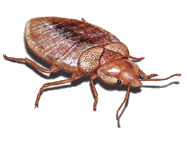 Bedbugs travel easily and quickly along pipes and boards, and their bodies are very flat, which allows them to hide in tiny crevices. In the daytime, they tend to stay out of the light, preferring to remain hidden in such places as mattress seams, mattress interiors, bed frames, nearby furniture, carpeting, between the pages of books, baseboards, inner walls, tiny wood holes, and/or room clutter. Bedbugs can be found on their own but will more often congregate in groups once established. They tend not to travel further than 100 feet (30 m) from their host to feed and will usually remain close to their blood supply in the same bedroom or living quarters where people sleep.
Bedbugs travel easily and quickly along pipes and boards, and their bodies are very flat, which allows them to hide in tiny crevices. In the daytime, they tend to stay out of the light, preferring to remain hidden in such places as mattress seams, mattress interiors, bed frames, nearby furniture, carpeting, between the pages of books, baseboards, inner walls, tiny wood holes, and/or room clutter. Bedbugs can be found on their own but will more often congregate in groups once established. They tend not to travel further than 100 feet (30 m) from their host to feed and will usually remain close to their blood supply in the same bedroom or living quarters where people sleep.
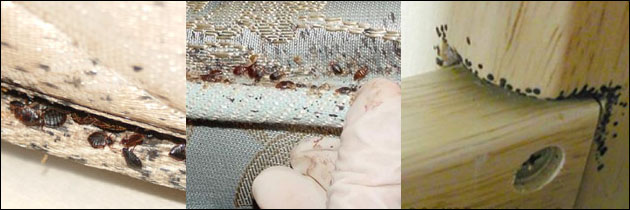
 Exact nesting locations of a typical infestation can vary greatly as bedbugs will often attempt to hide themselves within a wide range of tiny areas or spaces, within cracks and crevices, or simply in darker locations where they are out of plain sight. Such hiding spots may not always be immediately obvious to an inexperienced searcher'”although bedbugs will indeed be much easier to find and locate once an infestation has become concentrated. A single intricate bed frame or mattress can hold a wealth of choice areas for bedbugs to hide so careful, meticulous inspection is a must. A standard mattress, however, is most likely to house bedbugs along the sewn piping material running along the outer edges on both the top and bottom sides of the mattress. The common bedbug is also most likely to hide in certain sections or parts of various types of beds if the segments are, in fact, present (i.e., hiding in the wooden head or footboard, for example, if the bed has one). Bedbugs may also quietly nest themselves under the cover of various materials and lie completely still for long periods making detection even more difficult.
Exact nesting locations of a typical infestation can vary greatly as bedbugs will often attempt to hide themselves within a wide range of tiny areas or spaces, within cracks and crevices, or simply in darker locations where they are out of plain sight. Such hiding spots may not always be immediately obvious to an inexperienced searcher'”although bedbugs will indeed be much easier to find and locate once an infestation has become concentrated. A single intricate bed frame or mattress can hold a wealth of choice areas for bedbugs to hide so careful, meticulous inspection is a must. A standard mattress, however, is most likely to house bedbugs along the sewn piping material running along the outer edges on both the top and bottom sides of the mattress. The common bedbug is also most likely to hide in certain sections or parts of various types of beds if the segments are, in fact, present (i.e., hiding in the wooden head or footboard, for example, if the bed has one). Bedbugs may also quietly nest themselves under the cover of various materials and lie completely still for long periods making detection even more difficult.
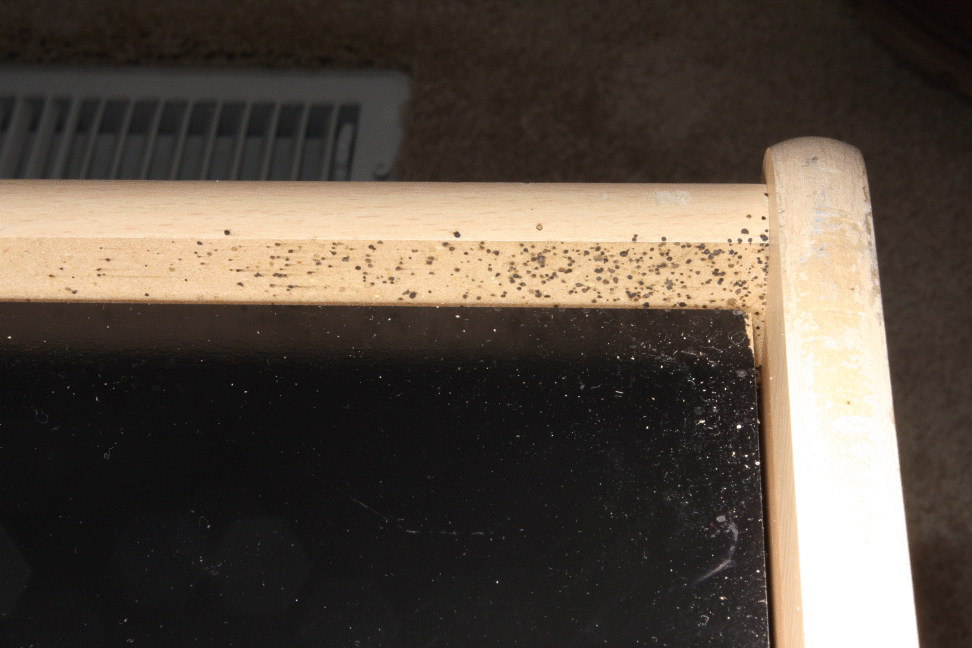
The potential places where a typical bedbug may choose to hide are numerous. It is, however, very common for bedbugs to nest in whatever furniture it is that a person sleeps and naps on'”which is not at all limited to beds, but also includes upholstered chairs, loveseats, sofas, plush furniture, futons, etc., as well as other non-traditional beds such as camping cots, floor pads, hide-a-beds, bean bags, strollers, cradles, etc. Bedbugs will attempt to nest in any of these sleeping structures if given the opportunity and will take cover in nearby areas as well (sleeping directly on the floor, for example, may cause them to feed but then nest in the nearby carpeting and furniture). Bedbugs tend to want to hide as close as possible to where they feed. If a person sleeps on a couch within a room where bedbugs are present, for example, then it could be generally expected that the bedbugs in the given room would quickly find their way onto the sofa as well as onto the sleeping person 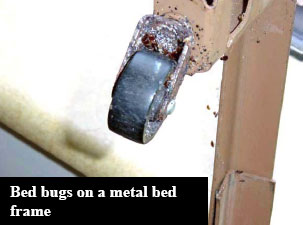 where they may then feed (i.e. unless the couch had been effectively segregated or isolated beforehand to prevent bedbugs from crawling onto it). Then, upon the sleeping host providing a blood meal, it could be expected that the engorged bedbugs will attempt to make the couch itself their nesting location'”with the bugs congregating under the sofa, in the seams and folds of the fabric, in the crevices, in the creases atop and behind the headrest, amongst the armrests, in the cushions, in the wooden assembly, etc. Bedbugs usually will not wander too far from their meal. And this process of searching out a host, honing in to feed, then hiding in immediate and nearby crevices can take place over the course of a single night and, in such a manner, a couch or an upholstered chair may become heavily infested with bedbugs within a very short time. An effective isolation of lounge furniture and/or taking steps to avoid sleeping on couches (esp. in high risk environments) will help to prevent this.
where they may then feed (i.e. unless the couch had been effectively segregated or isolated beforehand to prevent bedbugs from crawling onto it). Then, upon the sleeping host providing a blood meal, it could be expected that the engorged bedbugs will attempt to make the couch itself their nesting location'”with the bugs congregating under the sofa, in the seams and folds of the fabric, in the crevices, in the creases atop and behind the headrest, amongst the armrests, in the cushions, in the wooden assembly, etc. Bedbugs usually will not wander too far from their meal. And this process of searching out a host, honing in to feed, then hiding in immediate and nearby crevices can take place over the course of a single night and, in such a manner, a couch or an upholstered chair may become heavily infested with bedbugs within a very short time. An effective isolation of lounge furniture and/or taking steps to avoid sleeping on couches (esp. in high risk environments) will help to prevent this.
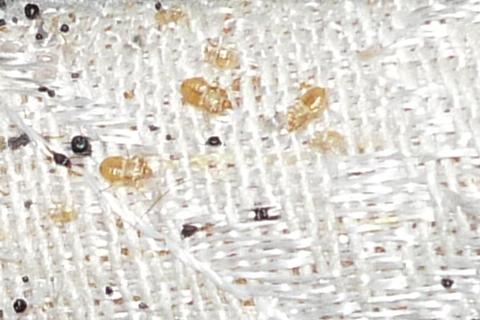 Minimizing potential nesting locations (such as through the removing of, disposal, and/or bagging of various clutter often surrounding the typical bed'”i.e. both on, around, and under it) can make it easier to pinpoint the remaining areas where bedbugs may be hiding. But such additional hiding spots are often times unique to each case of infestation since virtually any small space or crack in a given room can be useful as a nesting site to bedbugs'”so long as it is close to the host. Unchecked, bedbugs will eventually expand their overall nesting locations into nearby furniture such as dressers or nightstands, in drawers, in the cracks of picture frames, in screw or nail holes to bedroom fixtures, behind mirrors, etc. Then into the carpet, or under rugs, up the walls, and into the corners and such'”the potential for nesting sites among such a wide range of appliances is numerous. Within a single bed, bedbugs may nestle themselves in the mattress (along the tufts, folds, and seams), in the supporting box spring, platform, or bunkie board, in the framed support structures as well as in the cracks where the individual parts and segments are attached. They may hide amongst the remaining bed frame (in the headboard, footboard or hollows of the siderailings and bed posts), within rips and tears or holes in the bed, under the base/platform, in between the bedding between the layers of sheets and mattress covers (etc.), in the wheels of the bed, among the bunk ladder assembly, under bed skirts, in the bedcoverings, etc. Complete disassembly and subsequent treatment of the entire bed frame may be necessary to reveal all nesting spots when bedbugs are present. A thorough inspection would also include checking the entire room for telltale signs of harborages and inspecting the surrounding flooring, baseboards, and walls, etc.
Minimizing potential nesting locations (such as through the removing of, disposal, and/or bagging of various clutter often surrounding the typical bed'”i.e. both on, around, and under it) can make it easier to pinpoint the remaining areas where bedbugs may be hiding. But such additional hiding spots are often times unique to each case of infestation since virtually any small space or crack in a given room can be useful as a nesting site to bedbugs'”so long as it is close to the host. Unchecked, bedbugs will eventually expand their overall nesting locations into nearby furniture such as dressers or nightstands, in drawers, in the cracks of picture frames, in screw or nail holes to bedroom fixtures, behind mirrors, etc. Then into the carpet, or under rugs, up the walls, and into the corners and such'”the potential for nesting sites among such a wide range of appliances is numerous. Within a single bed, bedbugs may nestle themselves in the mattress (along the tufts, folds, and seams), in the supporting box spring, platform, or bunkie board, in the framed support structures as well as in the cracks where the individual parts and segments are attached. They may hide amongst the remaining bed frame (in the headboard, footboard or hollows of the siderailings and bed posts), within rips and tears or holes in the bed, under the base/platform, in between the bedding between the layers of sheets and mattress covers (etc.), in the wheels of the bed, among the bunk ladder assembly, under bed skirts, in the bedcoverings, etc. Complete disassembly and subsequent treatment of the entire bed frame may be necessary to reveal all nesting spots when bedbugs are present. A thorough inspection would also include checking the entire room for telltale signs of harborages and inspecting the surrounding flooring, baseboards, and walls, etc.
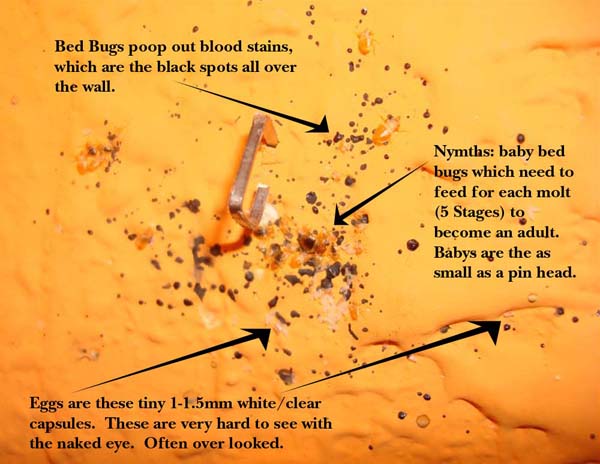
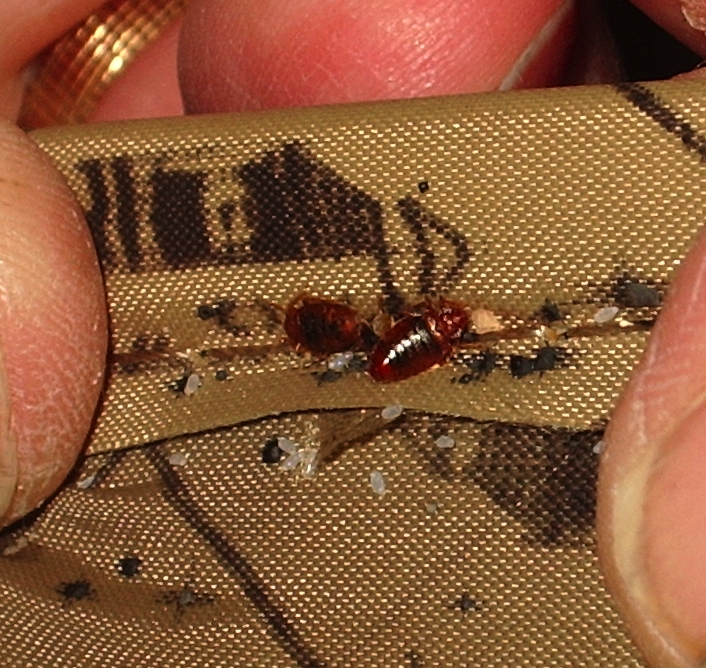 Bedbugs will also infest and nest in clutter that is often scattered around a typical bed'”such as in shoeboxes stored underneath or in boxed documents and photos. They may be found in nightstands as well as in objects placed on them. Or they may hide amongst clothes lying about in the room (though, it should be noted, that simply bagging all worn day clothing next to the bed every night while sleeping will help to prevent this). Bedbugs will also tend to nest in the baseboards along the bottoms of the walls, along the molding, under loose flooring or carpet, etc. And, depending on the proximity of such sites to the host and extent of the infestation, these locations should be expected. There are a multitude of other places where bedbugs have been known to hide as this list is by no means exhaustive. Where exactly it is that bedbugs go to nest may, in fact, be dependent on wherever it is that they can go'”albeit without going too far. But the extremes of their nesting locations are often relative to the numerical extent of the infestation, its source of origin, and how it is managed. Bedbugs, for example, nesting in the ceiling may indicate that they had entered the room and/or are spreading via the ceiling (i.e. possibly through the ceiling panels, vents, ceiling fixtures, pipes, etc.).
Bedbugs will also infest and nest in clutter that is often scattered around a typical bed'”such as in shoeboxes stored underneath or in boxed documents and photos. They may be found in nightstands as well as in objects placed on them. Or they may hide amongst clothes lying about in the room (though, it should be noted, that simply bagging all worn day clothing next to the bed every night while sleeping will help to prevent this). Bedbugs will also tend to nest in the baseboards along the bottoms of the walls, along the molding, under loose flooring or carpet, etc. And, depending on the proximity of such sites to the host and extent of the infestation, these locations should be expected. There are a multitude of other places where bedbugs have been known to hide as this list is by no means exhaustive. Where exactly it is that bedbugs go to nest may, in fact, be dependent on wherever it is that they can go'”albeit without going too far. But the extremes of their nesting locations are often relative to the numerical extent of the infestation, its source of origin, and how it is managed. Bedbugs, for example, nesting in the ceiling may indicate that they had entered the room and/or are spreading via the ceiling (i.e. possibly through the ceiling panels, vents, ceiling fixtures, pipes, etc.).
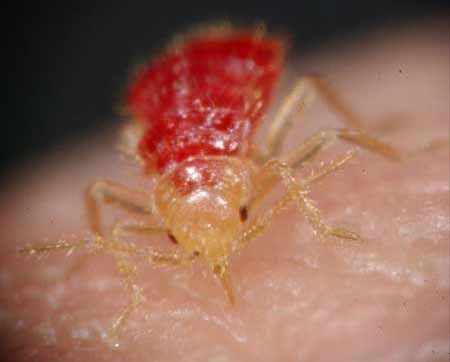 If children are in the house, bedbugs may also hide in toys and other recreational objects or in areas where younger ones play and/or nap. Bedbugs have also been found in door hinges, electrical fittings, in fire alarms, in lighting fixtures, amongst windowsills, in the cracks of plaster, behind peeled wallpaper, around curtains, in the cracks of brick and mortar, inside electronic devices, in various furniture, in floor cracks. And in blankets, purses, suitcases, lamp shades, inside speakers, under lamps, in vents, in shoes, above doorways and windows, under appliances, underneath linoleum, in storage, in books, in scattered paper, in envelopes, behind wiring, along piping (including both gas and plumbing pipes), in velcro, inside hollow doors, in ceiling fixtures, above the bed, in toys, in the ceiling, in phones, etc. -- put simply, it is possible that bedbugs may nest into any cracks or crevices that lie nearest to their hosts. Also, wicker furniture is known to be particularly targeted by bedbugs as a preferred nesting haven and should be removed in suspected areas.
If children are in the house, bedbugs may also hide in toys and other recreational objects or in areas where younger ones play and/or nap. Bedbugs have also been found in door hinges, electrical fittings, in fire alarms, in lighting fixtures, amongst windowsills, in the cracks of plaster, behind peeled wallpaper, around curtains, in the cracks of brick and mortar, inside electronic devices, in various furniture, in floor cracks. And in blankets, purses, suitcases, lamp shades, inside speakers, under lamps, in vents, in shoes, above doorways and windows, under appliances, underneath linoleum, in storage, in books, in scattered paper, in envelopes, behind wiring, along piping (including both gas and plumbing pipes), in velcro, inside hollow doors, in ceiling fixtures, above the bed, in toys, in the ceiling, in phones, etc. -- put simply, it is possible that bedbugs may nest into any cracks or crevices that lie nearest to their hosts. Also, wicker furniture is known to be particularly targeted by bedbugs as a preferred nesting haven and should be removed in suspected areas.
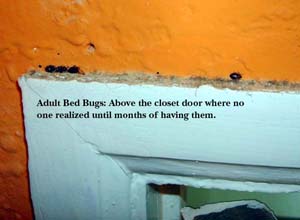 Bedbugs, in some instances, can be incredibly localized in their tendency to remain generally close to their primary meal supply'”even making it possible for the sleeping quarters on the side of one room to become heavily infested while the sleeping areas of a different side in the same room can seem to get by relatively untouched. This esoteric tendency of bedbugs toward localized colonization can make detection of a growing infestation even more difficult up until the last minute. But, in any case, bedbugs will expand into nearby locations either as the infestation grows, as they are inadvertently transported from location to location and forced to hide, as they are repelled from various stimuli, or bedbug infestations will expand as they are cut off from nourishment and forced to traverse new whereabouts in search of a new blood supply.
Bedbugs, in some instances, can be incredibly localized in their tendency to remain generally close to their primary meal supply'”even making it possible for the sleeping quarters on the side of one room to become heavily infested while the sleeping areas of a different side in the same room can seem to get by relatively untouched. This esoteric tendency of bedbugs toward localized colonization can make detection of a growing infestation even more difficult up until the last minute. But, in any case, bedbugs will expand into nearby locations either as the infestation grows, as they are inadvertently transported from location to location and forced to hide, as they are repelled from various stimuli, or bedbug infestations will expand as they are cut off from nourishment and forced to traverse new whereabouts in search of a new blood supply.
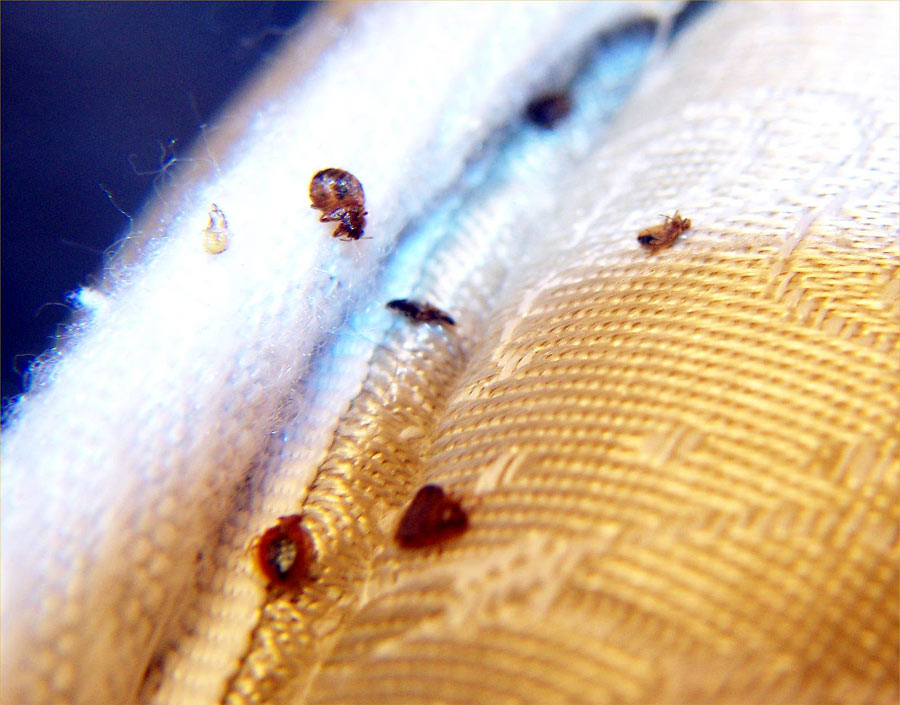
 Although bedbugs show a clear preference for hiding amongst certain materials such as wood or fabric, the nesting sites of a bedbug's choosing can literally be in any location that might allow them to remain nearest to their host and meal supply undetected. It is also possible that the nesting location may be physically on the host themselves inside their clothes'”especially if the clothes are not washed regularly or if the host is typically immobile, etc.
Although bedbugs show a clear preference for hiding amongst certain materials such as wood or fabric, the nesting sites of a bedbug's choosing can literally be in any location that might allow them to remain nearest to their host and meal supply undetected. It is also possible that the nesting location may be physically on the host themselves inside their clothes'”especially if the clothes are not washed regularly or if the host is typically immobile, etc.
 Bedbugs may also take refuge in unsuspected areas such as cars, luggage, moving vans, RVs, etc. And, where possible, will also feed on and nest nearby pets who may also be bitten. Bedbugs may also nest near other intruding animals that might be living within the house structure (such as near the roosting sites of bats, rodents, or birds, etc.).
Bedbugs may also take refuge in unsuspected areas such as cars, luggage, moving vans, RVs, etc. And, where possible, will also feed on and nest nearby pets who may also be bitten. Bedbugs may also nest near other intruding animals that might be living within the house structure (such as near the roosting sites of bats, rodents, or birds, etc.).
The more adept one is at spotting bedbugs and uprooting them at their harborage points, then the better and more equipped one will be in helping to prevent infestations, in greatly minimizing them, and at reducing their spread. Detection of bedbug nesting locations is also of paramount importance because the nocturnal insects have an uncanny tendency, and often frustrating ability, to hide wherever possible. It is not abnormal for the bedbugs within a dwelling to find the host as opposed to the other way around'”despite a reasonable search effort. Effective experience in locating them will also contribute to accurately confirming whether or not a bedbug infestation has been thoroughly eliminated. And can also provide additional assistance to pest control operators which is required for successful treatment, or allow one to, perhaps, eradicate a moderate to light infestation altogether on their own.
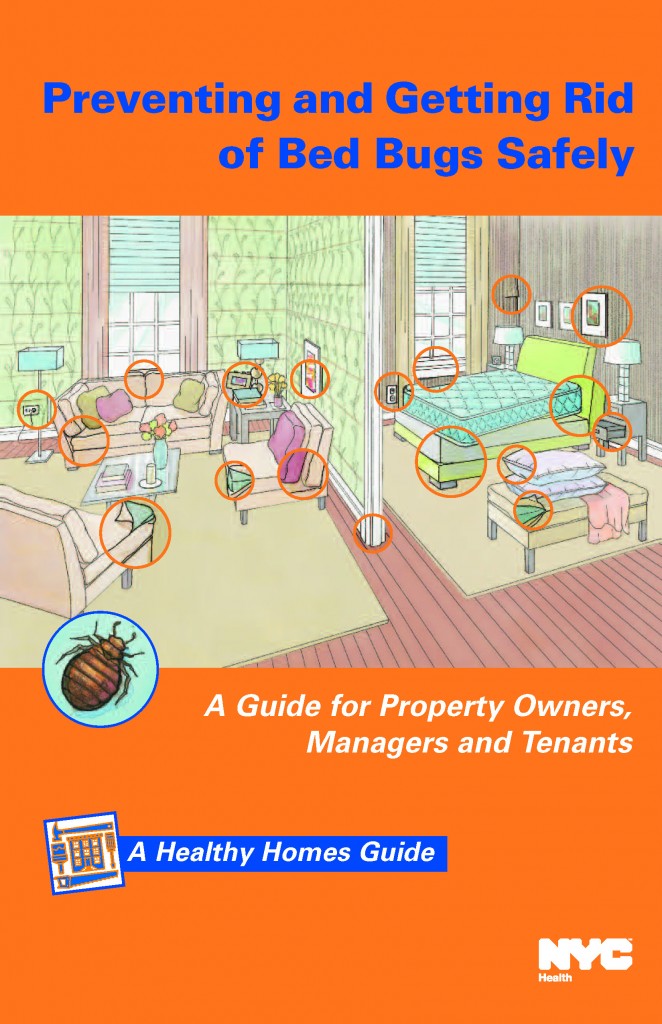
Posted in BED BUG DATABASE
Comments Off on Bed Bug Nesting Location

 Residence
Residence  Location
Location 










